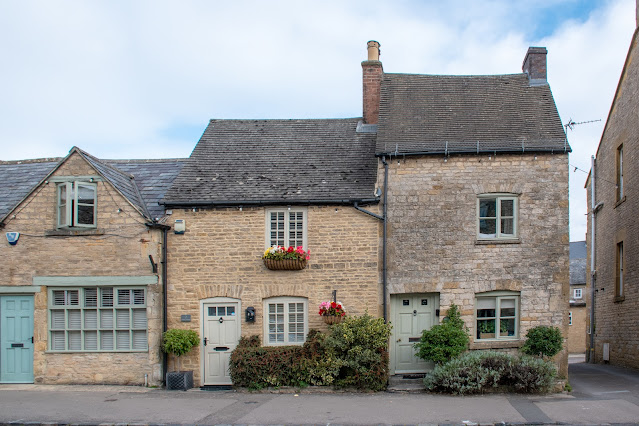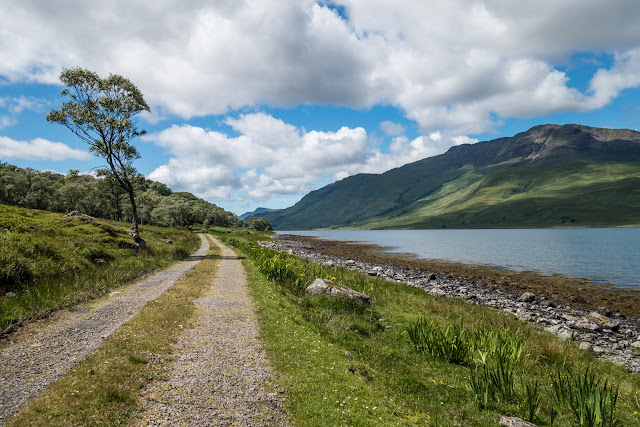Stow on the Wold - our holiday destination
Having decided to explore some of the beautiful Cotswold area, we initially found some difficulty in booking a cottage for the week, possible since people countrywide had started to spread their wings after the Covid pandemic. However, we eventually found a property in Stow on the Wold which seemed a good place to use as a base. It also appeared central to many of the places we wanted to see.
The view up the street which is deserted due to it being our Queen`s funeral. Other days it was like a racetrack all day!
At one end of the Square stands the ancient cross. The Market Cross was erected as a symbolic reminder to the traders of medieval times to deal honestly and fairly. The shaft, base and steps are medieval, but the gabled headstone is an addition restored by public subscription in 1995. The side panels depict the Crucifixion, Edward the Confessor, the Civil War, and the Wool Trade.
The Civil War side panel is a reminder that this is the area where the last Battle of the Civil War was fought.
12.JPG)
King Charles I stayed in the King’s Arms (above) in May 1645, but the town is best known as being the final location of the last battle of the first Civil War. Sir Jacob Astley, leading a Royalist force to relieve Charles I’s garrison at Oxford, was intercepted near Stow and driven into the Square, where many were killed or imprisoned. Sir Jacob was forced to sit on a drum near the cross and surrender to the Parliamentarians.
The narrow alleyways called 'tures' leading from the Square to the perimeter of the town were constructed for the better control of animals. There are several around the Market Square.
A couple of images of what is claimed as the oldest pub in England. Due to so much traffic, I was unable to get a reasonable front image but did get the above ones!
The cottage on the right is ours - St Anthony`s Cottage
The cottages opposite
Our lounge/ diner - yes, small! but well equipped and cosy.
Stow-on-the-Wold is the highest of the Cotswold towns standing exposed on eight hundred feet high Stow Hill at a junction of five major roads, including the Roman Fosse Way. Hence the traffic. But of course, its position was the reason for its success as it gathered trade from all directions as travelers passed along these roads.
The vast Market Square testifies to the town's former importance. At the height of the Cotswold wool industry the town was famous for its huge annual fairs where as many as 20,000 sheep were sold at one time.
The Civil War side panel is a reminder that this is the area where the last Battle of the Civil War was fought.
12.JPG)
King Charles I stayed in the King’s Arms (above) in May 1645, but the town is best known as being the final location of the last battle of the first Civil War. Sir Jacob Astley, leading a Royalist force to relieve Charles I’s garrison at Oxford, was intercepted near Stow and driven into the Square, where many were killed or imprisoned. Sir Jacob was forced to sit on a drum near the cross and surrender to the Parliamentarians.
Around the square the visitor is faced with an elegant array of Cotswold town houses and shops.
St. Edward’s Hall stands in the Square and was built in 1878 from unclaimed money placed in the Town Savings Bank and numerous generous gifts to provide the town with a meeting place. A figure of St. Edward stands in a niche over the main entrance. The Belfry Spire was added in 1894 to house the fire bell, as the Rector of that time would not allow the church bell to be used as such. It originally housed a museum of flints, fossils, and Roman coins found locally, the library of the local Book Society with a reading room, and recreation rooms with billiards and ping-pong tables. The Main Hall upstairs was used for special occasions like the Hunt Ball.
Today the downstairs is occupied by the public library, a visitor information center, and a collection of artefacts and militaria related to the Civil War. The Hall is managed by a Trustee Committee for the maintenance and further improvement of the building and facilities.
Like the surrounding area, the parish church of St Edward is of medieval origins and there is evidence to suggest that there has been a holy temple on this site since 708 AD, this is due to the monks of Evesham who used to own the land at that time. However, a church has been historically recorded here since around 986 AD, the chapel being built from the riches of Stow’s prosperous wool trade.
There have been quite a few debates as to which Edward the church was built for. Some say it was a local hermit of Stow hill called Edward whilst others say it was the Saxon King Edward, son of Alfred the Great. However, most have settled on it being built in honour of Edward the Confessor.
Although not much remains of the original Norman building, the stone church dates to the 13th century with the tower being built in the 14th. Finally, it was restored in the Gothic Revival style by JL Pearson in 1847 who also designed Truro Cathedral.
The Rood beam was erected in memory of those who laid down their lives in the great War 1914 - 1918.
The great West window
Externally, the most striking aspect of St Edward's is the pair of ancient yew trees flanking the 17th or 18th Century North Porch. It is for most people their initial visiting point, including ours!






13.JPG)


06.JPG)

04.JPG)
03.JPG)
02.JPG)







Comments